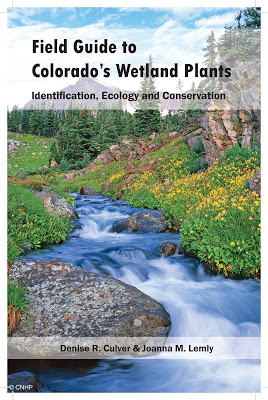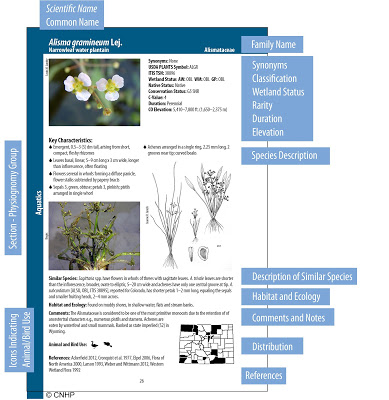The Colorado Natural Heritage Program (CNHP), a research unit in Colorado State University’s Warner College of Natural Resources, has just released the Field Guide to Colorado’s Wetland Plants: Identification, Ecology and Conservation. Although only about two percent of Colorado is made up of wetlands, they support almost 90 percent of Colorado’s ecosystems and wildlife, making wetlands an overlooked but valuable natural resource.

The field guide contains detailed descriptions, photos, and professional illustrations for more than 600 wetland plants as well as information regarding the wildlife species that are dependent on them. In addition to providing identification information, this guide provides information on wetland indicator status, classification, conservation status, rarity, and ecology, for a comprehensive field guide perfect for wetland ecologists, amateur botanists, or anyone who enjoys learning about Colorado’s plants and ecosystems.
The Field Guide to Colorado’s Wetland Plants: Identification, Ecology and Conservation is available now for online purchase on the CNHP website for $39.95 plus tax and shipping.
 |
| A sample page with key – click on the photo to see a larger version. |
“The book was developed to provide both professionals and amateur botanists with all of the currently available information on Colorado wetlands, compiled into one, easy-to-use field guide,” says co-author Denise Culver. “We hope it will be a very useful and informative guide for anyone recreating or working in wetland areas, and also hope it will help educate others about the importance of conserving Colorado wetlands.”
 |
| Book author Denise Culver hard at work identifying a plant. |
The culmination of 20 years of wetland research, the field guide is co-authored by Culver and Joanna M. Lemly who are wetland ecologists with the CNHP. The book development was funded by an Environmental Protection Agency Wetland Grant, and is the first complete wetland field guide of its kind for Colorado.
Culver has spent the majority of her career studying wetland ecology and wetland plant adaptation in Colorado, and says that “Wetlands are often overlooked in a state that gets less than 12 inches of rain a year, but it is all the more reason why it is so important to understand more about these powerful keys to ecosystem health.”
 |
| Book author Joanna Lemly out in the field collecting plant specimens. |
CNHP is also working on developing additional wetland tools including a pocket guide to wetland plants and a Colorado Wetland Field Guide Mobile App. The Colorado Natural Heritage Program is part of CSU’s Warner College of Natural Resources. Established in 1979, the CNHP is a non-profit scientific organization that tracks and ranks rare species and threatened plant communities in Colorado with the goal of ensuring that Colorado’s biodiversity resources are preserved. For more information on the CNHP visit the website.




